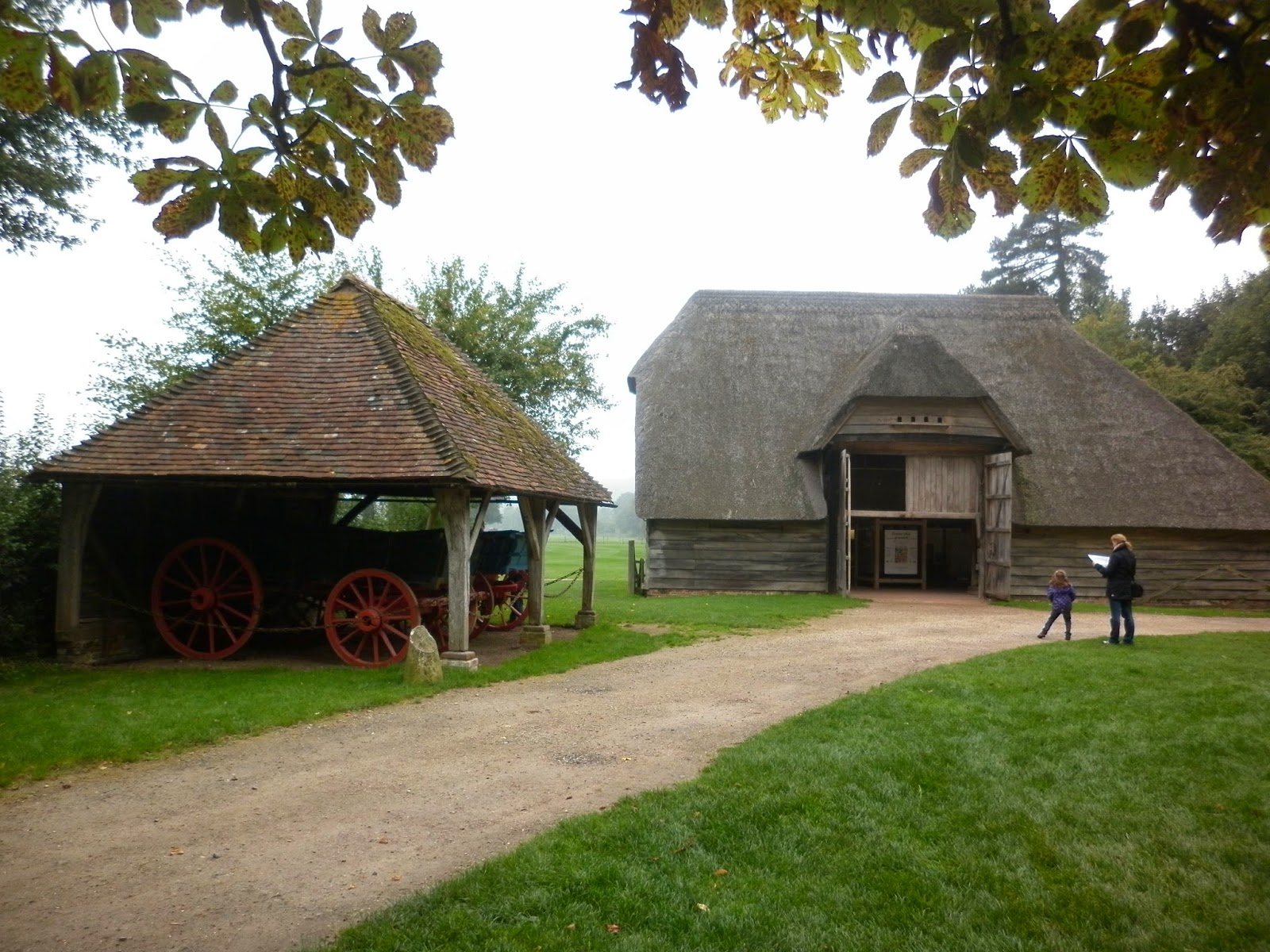Apart from lots of chats about the past, John & Sandra generously took us around their beautiful county and places that they especially enjoy. We were very willing participants! First on the list was the Weald and Downland Open Air Museum. The photos in this chapter were taken by Jeanette and myself.
The Weal & Down Museum website address is http://www.wealddown.co.uk/ and tells us that it is an open air museum in Sussex, UK. The Museum covers 50 acres (20 ha), with nearly 50 historic buildings dating from the thirteenth century to the nineteenth century, along with gardens, farm animals, walks and a lake. The buildings at the Museum were all threatened with destruction where they once stood. They were were carefully dismantled and rebuilt in their original form in this great location.
It was fun going into the buildings and remembering how folk lived some seven hundred years ago. Some buildings are over four hundred years old, and still stand strong. There is a display of implements, equipment, domestic ways of cooking and homely creativities that graphically illustrate how people lived so many years ago.
Introducing.....
The Bayleaf Medieval Farmstead!
In the past, tolls were payable at this Turnpike Gate:
"A penny for every Dog drawing any Truck, Barrow or other Other Carriage,
the Sum of One Penny."
However, being Humans, we payed our fare at the main entrance and so were permitted to carry on!

Share and enjoy our visit. It was fun.
Beautifully restored showing its former glory!
The way it was years ago.
In the photograph above, the open fire on the floor reminded me of village houses in the Papua New Guinea Highlands where the whole family lived in one room (round house). Cooking was done on the fire. Smoke just exited through the thatch roof - no chimney was necessary. It got rather smokey and would hardly have been a healthy way to live. The family slept around the fire, ate their food and told stories! It was the centre piece of the house. I sense that this is how it must have been in medieval England.
Wind Mills supplying water were an essential part of village life.
And the result? The Village pump!
Equally, water drove the flower mills.
It was hard work in those early days. Good to see it is not forgotten.
The finished article. Red Hot!!
An ancient craft still practiced throughout England!
Education as I remembered it when I went to school in 1945
Some would tell us that we were experiencing a typical English Autumn day. Overcast with some drizzle. But it added to the atmosphere. England is a beautiful country that I have always enjoyed visiting.
This atmosphere was so appropriate to this place!
Great scene!
Restored houses that all have their own special stories!
Love this place. Let's have a look inside!
Looks like the home and table of a wealthy merchant.
I wonder weather today's dinner was cooked on that fire in the middle of the room?
Greetings my Lord John. Are you comfortable?
Another place of comfort. An indoor dunny! Wow! Up-market!
It was inevitable that John, being a navy man, would wish to take us to a place called Buckler's Hard, a unique 18th Century shipbuilding village where warships for Nelson's Trafalgar fleet were built, in addition to other maritime vessels. I am glad he did, because it is quite fascinating! It is situated on the banks of the Beaulleu River, not far from Southampton as the following map will show:
I had not heard of Buckler's Hard before and was intrigued by its name and its origin. A little research told me that it was originally called Montagu Town and was established by the Second Duke of Montagu. Hence Montagu Town. For whatever reason, the name was changed to Buckler's Hard. John tells me that the term” hard” is common in the South of England and means 'a natural landing place rather that one artificially created.' 'The origin of Buckler’s possibly derives from the Buckle family who appear in the Beaulleu parish registers from 1668.'

Buckler's Hard, much like it would have been in the 18th Century.

The shipyards would have been here.
In 1740 it became a shipbuilding village and supplied the Navy with wooden vessels, using local timbers. As mentioned above, warships were built for Nelson's Trafalgar fleet, including HMS Euryalus, HMS Swiftsure and HMS Agamemnon, all of which fought at the Battle of Trafalgar in 1805. *www.wikipedia.org

The photograph above of a model shows clearly the shipyards
being a part of the community.

The finished HMS Euryalus launched into the Beaulleu River. Majestic!
During World War II it was again used for naval purposes, building motor torpedo boats and providing a base for ships used for the Normandy invasion in 1944. It was also the base for Sir Francis Chichester - remembered for his solo navigation of the world on board Gipsy Moth IV. He began and completed his voyage around the world from this location.

This memorial in the little chapel in Buckler's Hard.
So much for a bit of history and a connection between Nelson/Trafalgar and Buckler's Hard! And a connection with Australia? Of course. In the museum we found the following connection. Click it on enjoy reading it:
The story of Jasper & Solomon who landed in Australia.
Buckler's Hard is a delightful spot and still used today for recreational boating.
On our way back we enjoyed stopping off at a nearby village and found the following treasures!
Love good design!
This chapter was also going to add some photos about our visit to Oxford and especially the Ashmolean museum, which we both thoroughly enjoyed. But I fear this blog would become too long.
In our next episode, I look forward to telling you about our visit to London.




























No comments:
Post a Comment